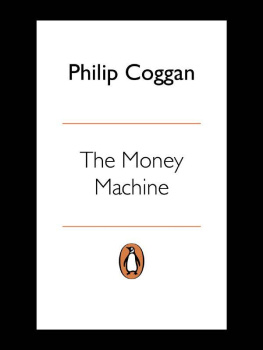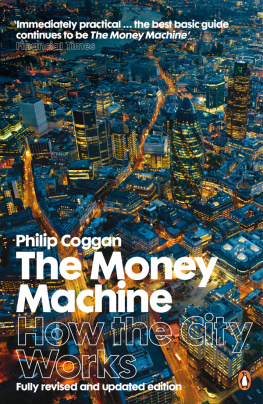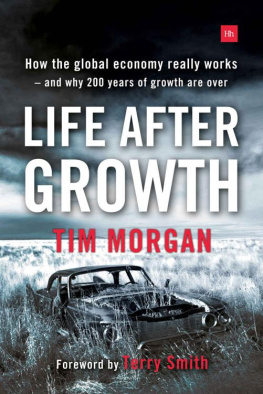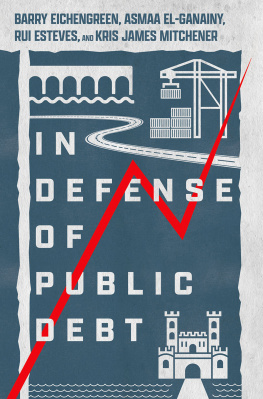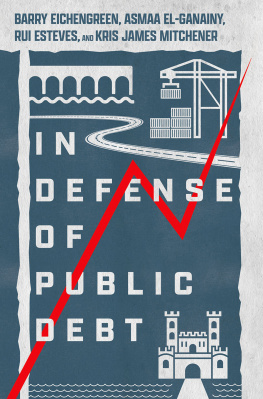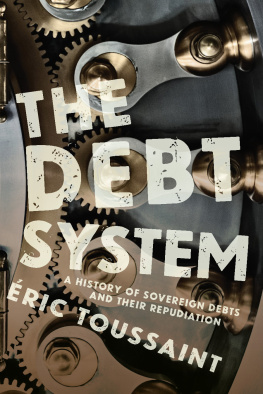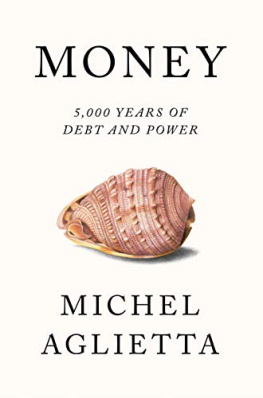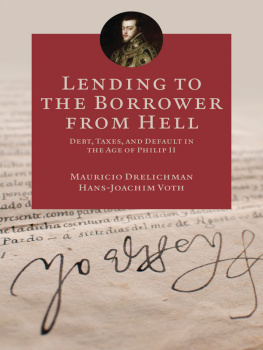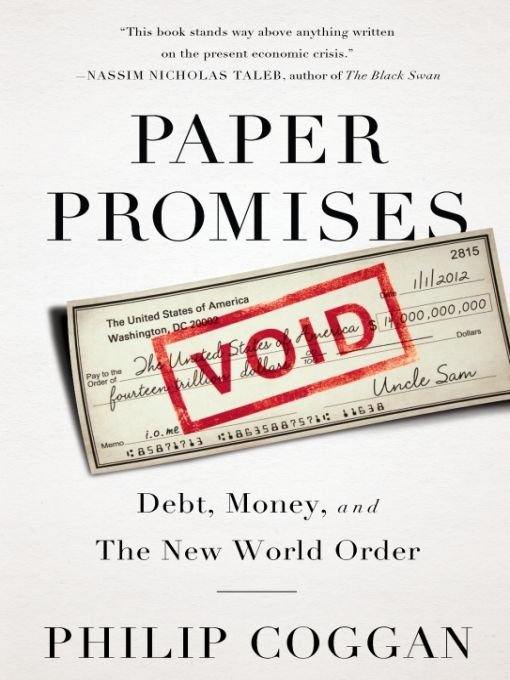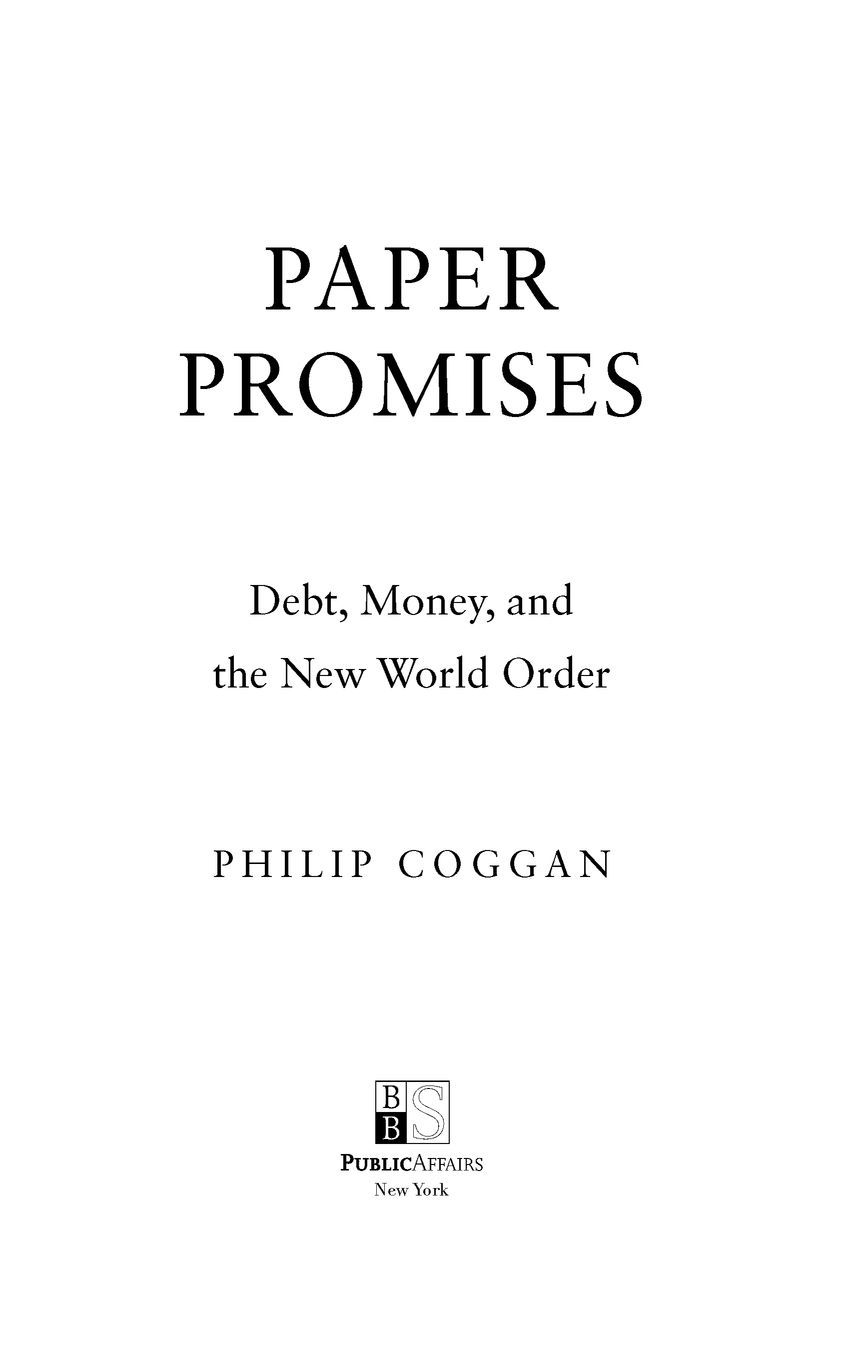Table of Contents
To Helena and Catherine,
with apologies for the debts left by my generation
Acknowledgements
This book was inspired by my work on the Economist, in particular a special report on debt that was published in the summer of 2010. While I was writing the report, I was struck both by the extraordinary rise in debt levels in recent years and by the role that debt has played in influencing economics over the centuries. Many a government has debased the coinage or devalued the currency to deal with a debt crisis. That brought the insight that economic history has been a war between creditors and debtors, with the nature of money as the battleground. The current crisis is just the latest skirmish.
The book is a work of journalism, based on my twenty-eight years in the profession and my extensive reading of the historical literature. It thus builds on the work of many excellent historians, who are extensively cited in both the footnotes and the bibliography. I am very greateful for their scholarship, which has allowed me to develop my own interpretation of events. Special mention should be given to Richard Duncan, whose books suggested the idea that the post-Bretton Woods era and asset inflation were intimately related.
In researching this book, I have been lucky to work for such an understanding employer as the Economist, under the leadership of John Micklethwait. Special thanks are due to Edward Carr, who initiated my hiring and who made many helpful stylistic comments on the manuscript; to John OSullivan, who put me right on many economic matters; my long-suffering officemate Andrew Palmer, who probably heard far too much about the books gestation; and to Chris Young, who looked through the book while on secondment from the Bank of England. I hope that association with any heretical pronouncements in the book does not blight his career.
At Penguin, my thanks are due to Georgina Laycock for commissioning the work and to Will Goodlad and Richard Duguid for seeing it through to publication. Charlotte Ridings was an exceptionally diligent copy-editor and any mistakes that have slipped through into print are mine, not hers.
All through the book my wife, Sandie, has been an inspiration, both in terms of editorial advice and in terms of support when deadlines took precedence over family life. That is one debt that I shall endeavour to repay.
Introduction
In the midst of life, we are in debt. We must borrow to pay for our education, for our consumer durables and for our houses. And as nations, we borrow money because the taxes we are willing to pay rarely match the public spending we wish to see.
Another name for debt is credit, a word derived from the Latin credere, to believe. When we borrow or lend money, it is an act both of trust and of confidence. Lenders have to trust the borrower to pay the money back. Homebuyers take on a mortgage, rather than rent, because they are confident houses will rise in price. Banks allow their customers to run up credit-card debts because they are confident that they will pay back both the capital and interest.
For much of the past forty years in the Western world, that confidence has been well placed. The economy has grown, recessions have been rare and incomes and asset prices have risen. It has paid to borrow, and to lend, and we have done a lot of it. In many Western countries, the total value of debt is three to four times the value of annual economic output.
But all that has changed. Like a cartoon character that has run off the edge of a cliff, we have made the mistake of looking down. We have realized how much debt we have taken on and started to worry about how we will pay it back. We have realized that asset prices do not always go up, not even if we wait for a decade or more. Europe has an ageing population and will have fewer workers with which to grow its economy. The US, so long the dominant power, is watching nervously in its rear-view mirror as China catches up. In August 2011, America lost its coveted AAA rating that had signified its status as the worlds safest borrower. In short, the confidence needed to borrow and lend is diminishing.
The result is a mess. This book is about this mess and how it will affect the global economy and the relationship between generations. But it is also about how our attitudes to money and debt have changed through history, and may be about to change again.
The massive debts accumulated over the last forty years cant be paid in full, and they wont be paid. The debt crises of Greece, Ireland and Portugal are just the start. The economic outlook for some countries, particularly in Europe, is weak thanks to deteriorating demographics: the number of retirees is growing relative to the number of workers. As a result, these countries incomes will not grow fast enough to service their debts. Either there will be formal defaults, under which debtors pay back only a proportion of their loans, or there will be effective defaults, in which the debts are repaid in money that has lost its purchasing power through currency devaluation or inflation. Economics and politics for the next decade and beyond will be dominated by this issue, as social classes and countries debate where the brunt of the pain will fall.
THE FARMERS AND THE BANKERS
The Democratic presidential candidate was young, with just four years in Congress under his belt. He electrified his party with his powerful oratory and outshone his opponent, a military veteran, on the campaign trail. He represented a mid-west state although he had not been born there. He toured the country appealing to the common man against the interests of big business. The day will come when corporations will cease to consider themselves greater than the country which created them, he declared. But, despite drawing more votes than the previous Democratic candidate, he lost. For this was not Barack Obama in 2008. This was William Jennings Bryan in 1896.
Bryan campaigned on an issue that may seem obscure now he believed in bimetallism, the use of silver as well as gold as backing for the dollar. But Bryan was in fact championing an age-old cause: the interest of debtors against their creditors. Bryan spoke in favour of farmers, who had taken on debts to buy land and machinery and then had seen crop prices plunge. The farmers wanted higher prices and believed that adding silver to the currency would deliver them. He was opposed by bankers, who believed that sound money could only be based on gold.
In the late nineteenth century, most developed economies were governed by the gold standard, a system that tied the amount of paper money in circulation to the stock of gold. Since governments could not magic more gold out of thin air, the standard did not allow continuously rising prices. Safeguards also prevented governments from debasing the currency, the ancient trick of adulterating coins with base metal.
Between 1896 and 1908, Bryan ran for President three times and lost on each occasion. He was unlucky. Just as he was complaining about the lack of money, gold deposit discoveries in Alaska and South Africa were expanding supply. The American century was about to dawn in which his country was to become the dominant economic and military power.
But the defeat of Bryans ideas was only temporary. Within six years of Bryans last defeat the gold standard was suspended, and the attempt to resuscitate it after the First World War failed. A world saddled by wartime debts found the constraints of the gold standard too hard to bear.


